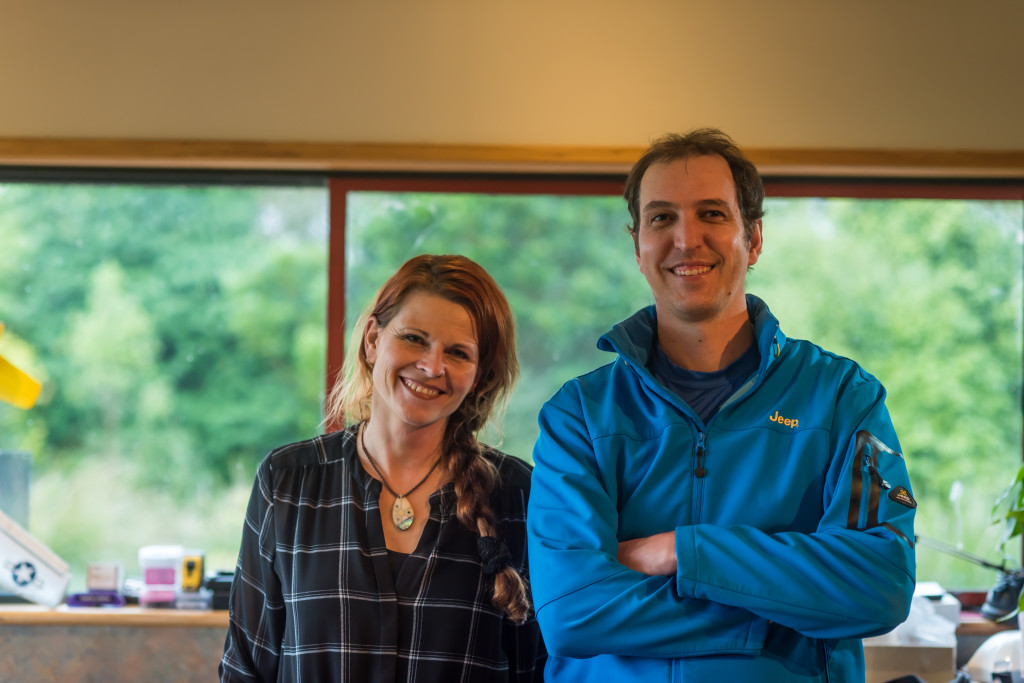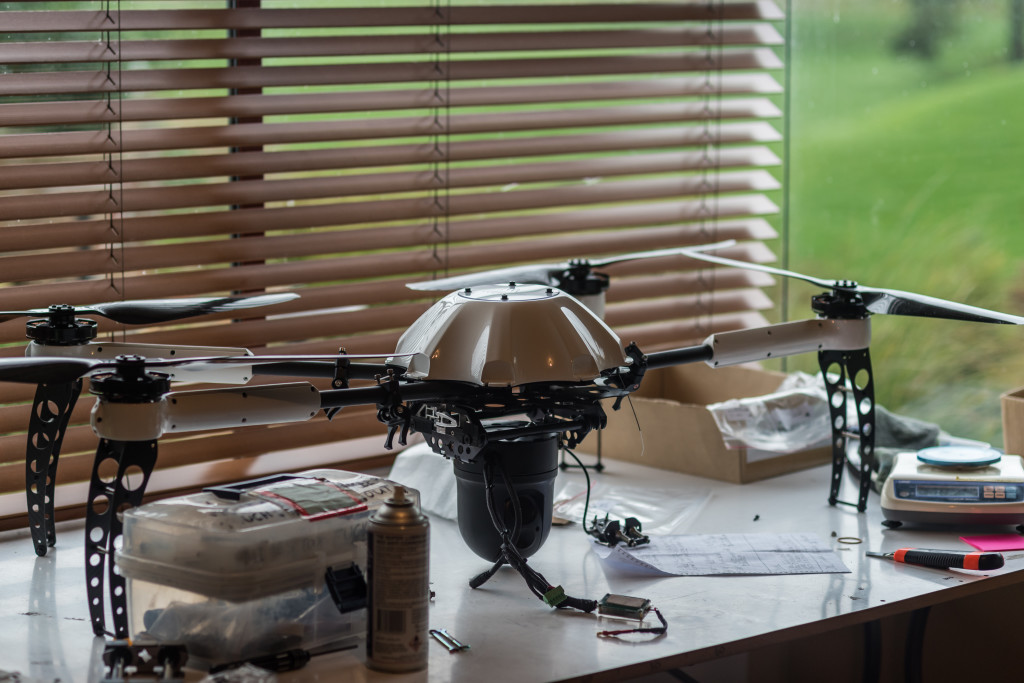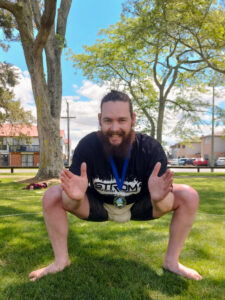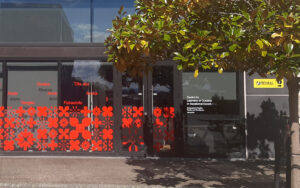Drone company flying high
Waikato-based Aeronavics focus on the big picture in their drive to the top of the industry.
Just outside Newcastle in Australia, near some of the pylons and high voltage lines that deliver power to the city, a tall South African engineer was moving with a slightly unnatural gait.
Coenraad Brand was being very careful not to take large steps, moving in a weird half shuffle and doing his level best to be less tall. A power company official had just put the fear of god in him in the name of health and safety.
Half a million kilovolts of energy coursed through those lines.
The charge was so high the ground under the lines, and around the pylons, was electrically charged. Too big a step could cause that charge to arc through him, giving him a dangerous shock. And if he got within five metres of the lines the voltage could jump across to him.
Brand knew it was fairly safe. He didn’t, technically, really need to do that weird shuffle walk.
“But I was, I was also keeping my head down,” said Brand.
Brand is a technical consultant and project manager for Raglan based drone builders Aeronavics, which will be at this year’s inaugural Fieldays Innovation Accelerator.
The challenges of working around high voltage lines was why he was there. The power company wanted to use drones for inspections, so they’d only have to spend the time and expense of sending a team up if there was something wrong.
Brand was running a field trial to show them Aeronavics drones would be perfect for their needs, they could handle the interference and the camera could pick out every nut and bolt on the pylons.

That’s a big part of what Aeronavics does.
When a potential client comes to them with a problem, and none of their off the shelf drones fit the bill, they try to solve it.
“We usually try and go out and experience the problem, see what they’re trying to achieve. Really understanding the problem is the first thing,” Brand explained.
“We look at the environment, and what tools they will need. Would it be sensors? Do they need special cameras? That will determine the payload, the flight times and how they want to use it. And with all those parameters you design a solution.”
Co-director and co-founder Linda Bulk said they always have an eye on marketing those solutions on a larger scale. If one company has come to them with a problem chances are others have the same issue.
“It’s not like they’re one off projects. We develop applications [of the technology], solutions, that we want to spread out around the world,” she said.
That focus on the big picture is part of an effort to lay the groundwork for a drive to the top of the industry. Bulk and her team hope to make Aeronavics one of the top three players in the world.
It’s all very ambitious for a small company that only started five years ago.
But then again they were the first company in the world to sell drones for commercial use. And when the United States Federal Aviation Authority announced the first commercial drone permits for Hollywood filmmakers, last September, those permits required the use of Aeronavics “SkyJib” drone.
All of that came out of one couple’s hobby.
In 2008 Bulk and her husband Rob Brouwer, a former commercial pilot who has a deep enthusiasm for flying model aircraft, were shopping for a model helicopter when they came across a multi-rotored drone. Neither had seen anything like it before, but both were fascinated by the potential of the technology, so they got one.
“We just started playing with that, and I was doing some photography and thought, can you imagine strapping a camera underneath and taking some aerial photographs?” Bulk said.
Soon they were learning how to make carbon fibre and hand crafting airframes. Eventually the software was good enough that they could finally build one that was a useful tool for aerial photography
“We put one together and it worked really well. The footage that we were getting was really quite extraordinary. Some of that got out on the internet and people started to ask if they could buy our airframe. For quite a long time we said no. We were hand making them, it wasn’t really something we could repeat,” said Bulk.

Again they saw the potential, the demand was there so they made engineering drawings of their design, secured a manufacturer and started selling them.
That was in 2010, the start of the company that would later become Aeronavics.
Within the first week they had a distributor in France, and in six months they had 60 distributors around the world. The company steadily grew over the years, moving through premises like a hermit crab through shells.
The latest shell is a large two storey farm house just outside of Raglan.
There’s a homey feel to the place with its warm grey and off white walls, light brown wooden door and window frames, pool and large modern kitchen. It makes a strange contrast with the whiteboards full of notes, office equipment and drones and model aircraft sitting on just about every available surface. It’s like a bunch of enthusiastic engineers snuck into someone’s house while they were on holiday and set up shop.
Everyone seems to like it, working on their various projects, gathering in the kitchen in ones and twos over tea and toast. It must be almost like working from home
“This is nearly the end of that, unfortunately. This is lovely but it won’t be long until we’re looking at the next premises,” Bulk said.
As business expands and new projects gear up, Aeronavics is in the process of recruiting six new employees.
The shell is starting to chafe again.
A good chunk of the company’s latest round of growth is coming from an expansion into agri-business.
Two years ago, while looking for new opportunities, Bulk’s team saw potential for drones in agriculture. So Aeronavics started developing agricultural applications, winning the prestigious Most Viable Business Award in the 2013 Fieldays Innovation Den.
The Innovation Den programme was set up to help newcomers find a way to make business contacts and get exposure in the agricultural market. Eight participants are selected to make a pitch to a panel of business leaders and investors. Winning the award got Aeronavics into a business development programme with SODA Inc, worth $15,000.
It also came with some major attention from national media, including a 7 Sharp feature on the company.
“There was a lot of interest… a lot of exposure that we got from [the Innovation Den]. It launched us into that agricultural space,” Bulk said.
But it almost didn’t happen.
“It was a bit of an afterthought. One of our guys entered us into that competition, we didn’t know until we were accepted,” Bulk chuckled.
Participating in the Innovation Den got Aeronavics a display space at the Fieldays Innovation Centre, giving the team a chance to gauge farmers’ response.
“There was a lot of positive response, in the sense that they could sort of imagine the usefulness. Yet at the same time the general feeling was they couldn’t see ever using it themselves,” Bulk said.
But a couple of years has made a huge difference. Drones have gone mainstream, some of the novelty is starting to wear off and farmers are a lot more convinced they’ll have a use for drones.
“It’s very different. It’s more ‘yeah, we know it’s going to happen.’ It’s not a question any more,” said Bulk.
It doesn’t hurt that farmers are also starting to see more concrete applications of the technology. On top of checking fencing and monitoring livestock, drones can be fitted with sensors to measure ground moisture, crop growth and nutrient levels. Aeronavics is even working on a larger drone that can spray for weeds in difficult to reach spots.
“We’re working on applications with farmers. They’ve got a unique environment, unique challenges. It’s an ongoing project, developing new sensors and new ideas for them.” Coenraad Brand said.
This year Aeronavics was one of the first companies invited to take part in the inaugural Fieldays Innovation Accelerator. The new programme gives previous Innovation Centre participants a free space to showcase their products, as a stepping stone towards a full exhibition site.
“We’ll be in the Accelerator, presenting our next-generation drones and the newer applications that are upcoming. And there’ll be a couple of exhibitors that’ll have our drones displayed as part of how they use it in the field, so that’s good,” Bulk said.




